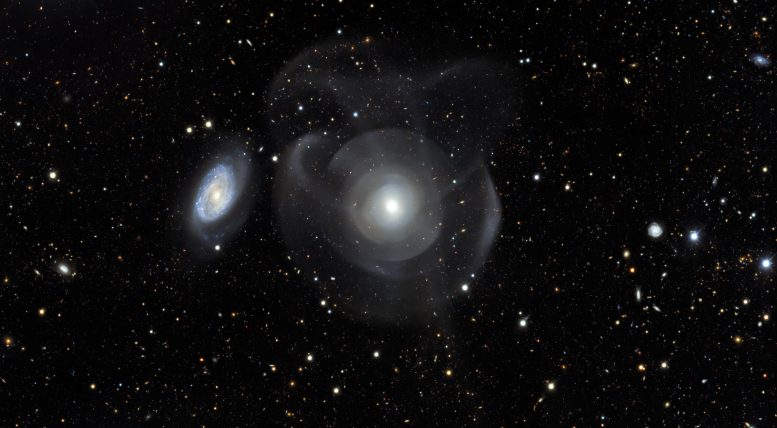
Elliptical galaxies are generally characterized by their relatively smooth appearance when compared with spiral galaxies (one of which is to the left), which have more flocculent structures interwoven with dust lanes and spiral arms. NGC 474 is at a distance of about 100 million light-years in the constellation of Pisces. This image shows unusual structures around NGC 474 characterized as tidal tails and shell-like structures made up of hundreds of millions of stars. These features are due to recent mergers (within the last billion years) or close interactions with smaller infalling dwarf galaxies. Credit: DES/DOE/Fermilab/NCSA & CTIO/NOIRLab/NSF/AURA, Acknowledgments: Image processing: DES, Jen Miller (Gemini Observatory/NSF’s NOIRLab), Travis Rector (University of Alaska Anchorage), Mahdi Zamani & Davide de Martin
The Dark Energy Survey has released a massive, public collection of astronomical data and calibrated images from six years of work. Containing data on nearly 700 million astronomical objects, this second data release in the Survey’s seven-year history is the topic of sessions today and tomorrow at the 237th meeting of the American Astronomical Society.
DR2 is the second release of images and object catalogs from the Dark Energy Survey (DES). It is the culmination of over half a decade of astronomical data collection and analysis, with the ultimate goal of understanding the accelerating expansion rate of the Universe and the phenomenon of dark energy that is thought to be responsible for the expansion. The Dark Energy Survey is a global collaboration that includes the Department of Energy’s (DOE) Fermi National Accelerator Laboratory (Fermilab), the National Center for Supercomputing Applications (NCSA), and NSF’s NOIRLab.
Including a catalog of nearly 700 million astronomical objects, DR2 builds on the 400 million objects cataloged with the Survey’s previous data release (DR1), and also improves on it by refining calibration techniques, which, with the deeper combined images from DR2, leads to improved estimates of the amount and distribution of matter in the Universe. It is one of the largest astronomical catalogs released to date.
Astronomical researchers around the world can access these unprecedented data and mine them to make new discoveries about the Universe, complementary to the studies being carried out by the Dark Energy Survey collaboration. The full data release can be accessed here and is available to scientists and the public to explore.
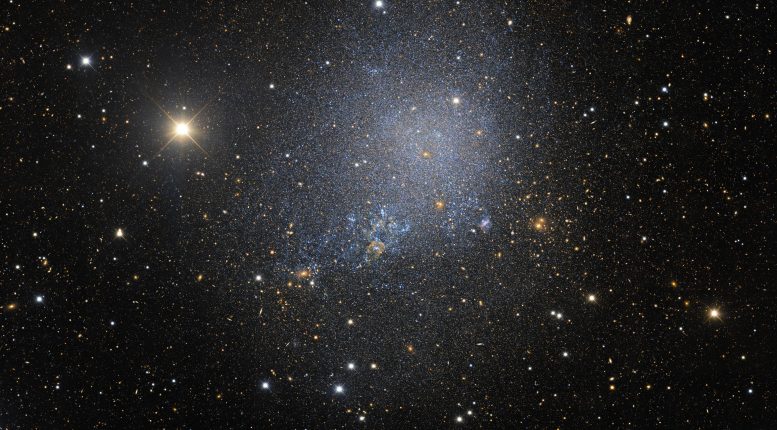
The irregular dwarf galaxy IC 1613 contains some 100 million stars and is a member of our Local Group of galaxies, which also includes our Milky Way, the Andromeda spiral galaxy, and the Magellanic Clouds. It is at a distance of 2.4 million light-years and contains several examples of Cepheid variable stars — key calibrators of the cosmic distance ladder. The bulk of its stars were formed about 7 billion years ago and it does not appear to be undergoing star formation at the present day, unlike other very active dwarf irregulars such as the Large and Small Magellanic clouds.
To the lower right of IC 1613, one may view a background galaxy cluster (several hundred times more distant than IC 1613) consisting of dozens of orange-yellow blobs, centered on a pair of giant cluster elliptical galaxies. To the left of the irregular galaxy is a bright, sixth magnitude, foreground, Milky Way star in the constellation of Cetus the Whale, identified here as a star by its sharp diffraction spikes radiating at 45-degree angles.
Credit: DES/DOE/Fermilab/NCSA & CTIO/NOIRLab/NSF/AURA, Acknowledgments: Image processing: DES, Jen Miller (Gemini Observatory/NSF’s NOIRLab), Travis Rector (University of Alaska Anchorage), Mahdi Zamani & Davide de Martin
One early result relates to the construction of a catalog of RR Lyrae pulsating stars, which tell scientists about the region of space beyond the edge of our Milky Way. In this area nearly devoid of stars, the motion of the RR Lyrae stars hints at the presence of an enormous “halo” of invisible dark matter, which may provide clues to how our galaxy was assembled over the last 12 billion years. In another result, DES scientists used the extensive DR2 galaxy catalog, along with data from the LIGO gravitational wave experiment, to estimate the location of a black hole merger and, independent of other techniques, infer the value of the Hubble constant, a key cosmological parameter. Combining their data with other surveys, DES scientists have also been able to generate a detailed map of the Milky Way’s dwarf satellites, giving researchers insight into how our own galaxy was assembled and how it compares with cosmologists’ predictions.
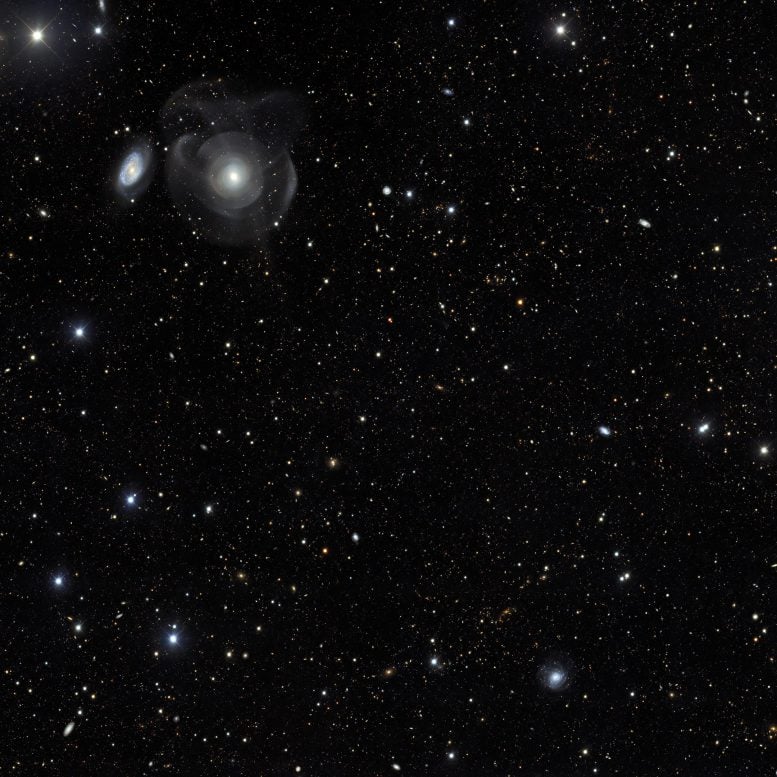
NGC 474 is at a distance of about 100 million light-years in the constellation of Pisces. This image shows unusual structures around NGC 474 characterized as tidal tails and shell-like structures made up of hundreds of millions of stars. Credit: DES/DOE/Fermilab/NCSA & CTIO/NOIRLab/NSF/AURA, Acknowledgments: Image processing: DES, Jen Miller (Gemini Observatory/NSF’s NOIRLab), Travis Rector (University of Alaska Anchorage), Mahdi Zamani & Davide de Martin
The detailed precision cosmology constraints based on the full six-year DES dataset will come out over the next two years.
DES was conceived to map hundreds of millions of galaxies and to chart the size of the expanding Universe as it accelerates under the influence of dark energy. DES has produced the largest and most accurate dark matter map from galaxy weak lensing to date.
Covering 5000 square degrees of the southern sky, the survey data enable many other investigations in addition to those targeting dark energy, covering a vast range of cosmic distances — from discovering new nearby Solar System objects to investigating the nature of the first star-forming galaxies in the early Universe.
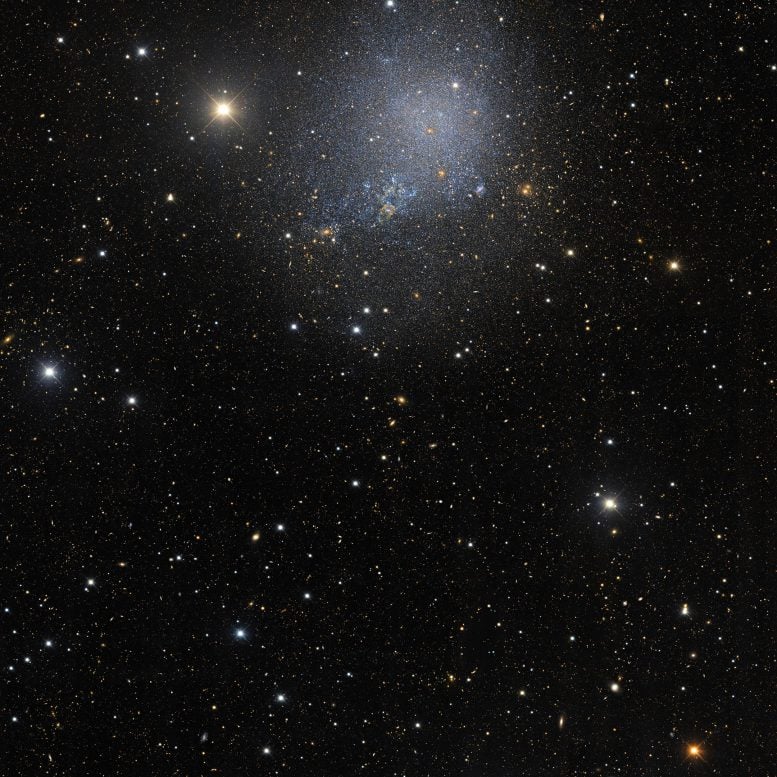
The irregular dwarf galaxy IC 1613 contains some 100 million stars and is a member of our Local Group of galaxies, which also includes our Milky Way, the Andromeda spiral galaxy, and the Magellanic Clouds. Credit: DES/DOE/Fermilab/NCSA & CTIO/NOIRLab/NSF/AURA, Acknowledgments: Image processing: DES, Jen Miller (Gemini Observatory/NSF’s NOIRLab), Travis Rector (University of Alaska Anchorage), Mahdi Zamani & Davide de Martin
“This is a momentous milestone. For six years, the Dark Energy Survey collaboration took pictures of distant celestial objects in the night sky. Now, after carefully checking the quality and calibration of the images captured by the Dark Energy Camera, we are releasing this second batch of data to the public,” said DES Director Rich Kron of Fermilab and the University of Chicago. “We invite professional and amateur scientists alike to dig into what we consider a rich mine of gems waiting to be discovered.”
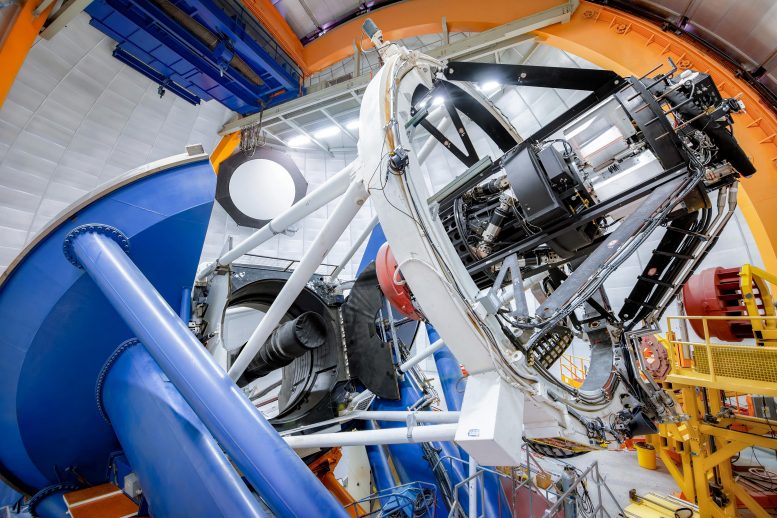
The Dark Energy Camera (DECam), fabricated by the Department of Energy (DOE), is mounted on the Víctor M. Blanco 4-meter Telescope at the Cerro Tololo Inter-American Observatory (CTIO) in north-central Chile. Telescope construction started in 1969 with the casting of the primary mirror. The assembly at the Cerro Tololo mountaintop was finished in 1974. Upon completion of construction it was the 3rd largest telescope in the world, behind the 200-inch Hale telescope at Palomar Observatory in California and the BTA-6 in southern Russia, and was the largest in the Southern Hemisphere (a title that it held for 22 years). It was later named in 1995 in honor of Víctor M. Blanco, Puerto Rican astronomer and former director of CTIO. Credit: DOE/LBNL/DECam/R. Hahn/CTIO/NOIRLab/NSF/AURA
The primary tool used to collect these images, the Dark Energy Camera (DECam), fabricated by DOE, is mounted on the National Science Foundation-funded Víctor M. Blanco 4-meter Telescope, part of the Cerro Tololo Inter-American Observatory (CTIO) in the Chilean Andes, a Program of NSF’s NOIRLab. Each week from 2013 to 2019, DECam collected thousands of images of the southern sky, unlocking a trove of potential cosmological insights.
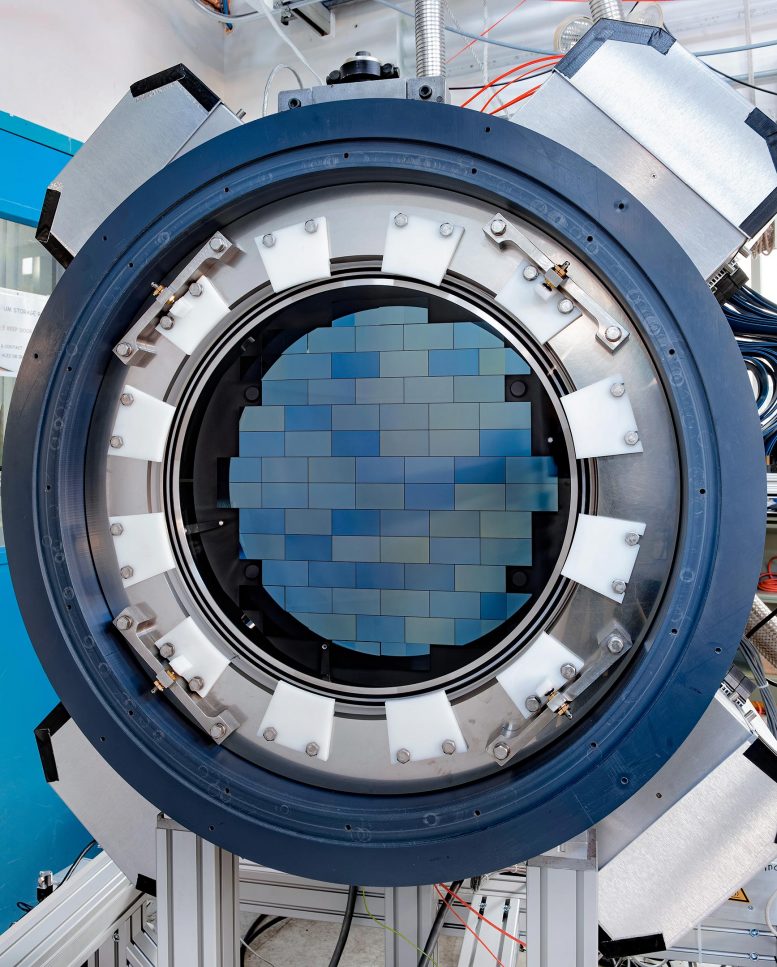
The Dark Energy Camera (DECam) focal plane consists of a science array of sixty-two 2048 x 4096 CCDs. Additionally, there are four 2048 x 2048 guider CCDs and eight 2048 x 2048 focus and alignment CCDs. The quantum efficiency of these LBNL-designed CCDs with their anti-reflective coating is red optimized to be more than 90% at 900 nm and more than 60% over the range of 400-1000 nm. The Dark Energy Survey CCDs were fabricated by Dalsa with further processing done by Lawrence Berkeley National Laboratory (Berkeley Lab). They were then packaged and tested by the Department of Energy’s (DOE) Fermilab. DECam was fabricated by the DOE. Credit: DES/DOE/LBNL/CTIO/NOIRLab/NSF/AURA/R. Hahn
Once captured, these images (and the large amount of data surrounding them) were transferred to NCSA for processing via the DES Data Management (DESDM) project. Using the Blue Waters supercomputer at NCSA, the Illinois Campus Cluster, and computational systems at Fermilab, NCSA prepares calibrated data products for research and public consumption. It took approximately four months to process one year’s worth of data into a searchable, usable catalog. The DES DR2 is hosted at the Community Science and Data Center (CSDC), a Program of NSF’s NOIRLab. CSDC provides software systems, user services, and development initiatives to connect and support the scientific missions of NOIRLab’s telescopes, including the Blanco Telescope at CTIO.
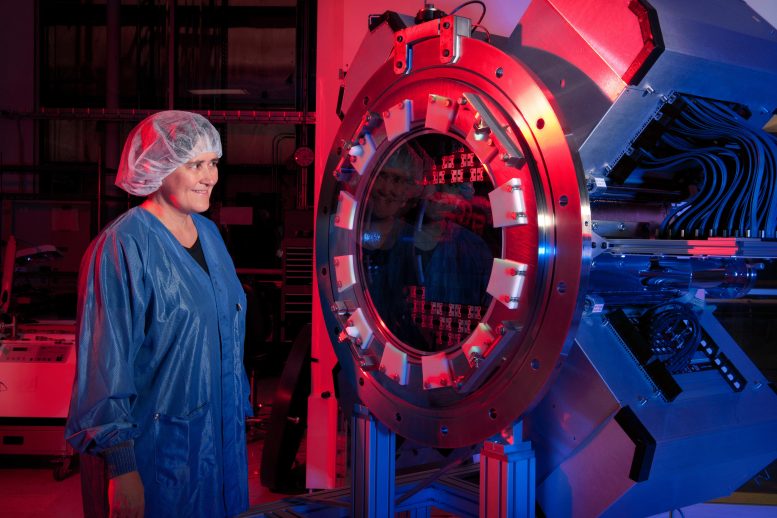
The Dark Energy Camera (DECam) focal plane compared with the size of a person. DECam was fabricated by the Department of Energy (DOE). Credit: DES/DOE/LBNL/CTIO/NOIRLab/NSF/AURA/R. Hahn
“Because astronomical datasets today are so vast, the cost of handling them is prohibitive for individual researchers or most organizations,” said Robert Nikutta, Project Scientist for Astro Data Lab at CSDC. “CSDC provides open access to big astronomical datasets like DES DR2, and the necessary tools to explore and exploit them — then all it takes is someone from the community with a clever idea to discover new and exciting science.”
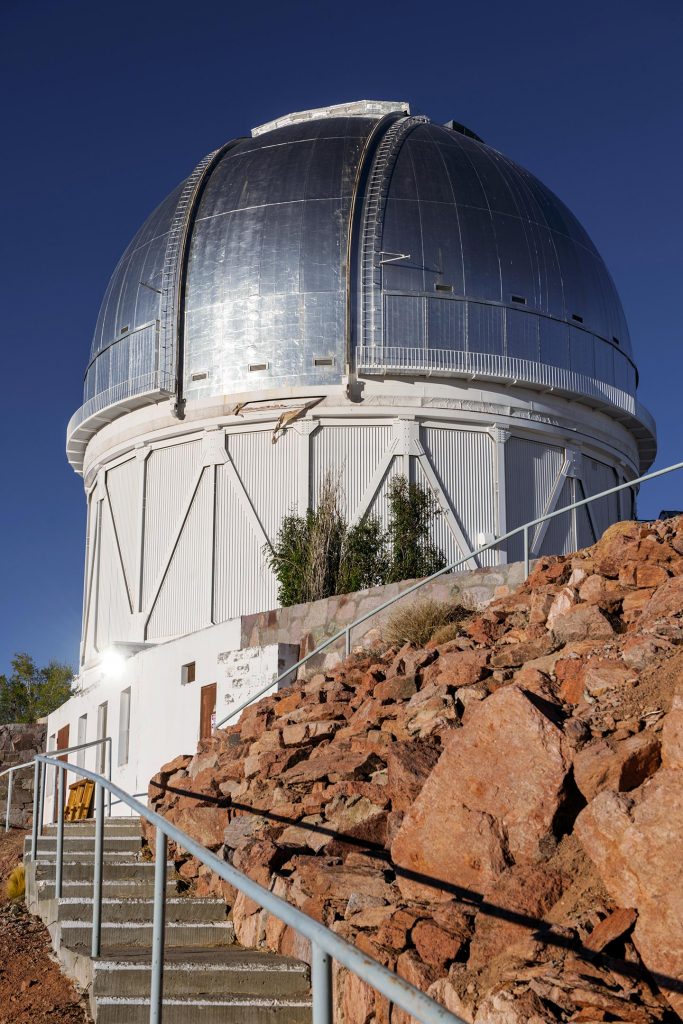
The Víctor M. Blanco 4-meter Telescope stands tall at Cerro Tololo Inter-American Observatory (CTIO) in Chile. The Blanco began operating in 1976, providing astronomers with a world-class observatory in the southern hemisphere, and it continues to produce cutting-edge science. The Blanco is currently equipped with the Dark Energy Camera (DECam), a state-of-the-art 500-megapixel camera that completed the five-year Dark Energy Survey in early 2019. DECam continues with an expanded mission and is providing astronomers with a powerful tool for studying dark energy, exoplanets, and more. Credit: DES/DOE/LBNL/CTIO/NOIRLab/NSF/AURA/R. Hahn
NSF’s NOIRLab (National Optical-Infrared Astronomy Research Laboratory), the US center for ground-based optical-infrared astronomy, operates the international Gemini Observatory (a facility of NSF, NRC–Canada, ANID–Chile, MCTIC–Brazil, MINCyT–Argentina, and KASI–Republic of Korea), Kitt Peak National Observatory (KPNO), Cerro Tololo Inter-American Observatory (CTIO), the Community Science and Data Center (CSDC), and Vera C. Rubin Observatory (in cooperation with DOE’s SLAC National Accelerator Laboratory). It is managed by the Association of Universities for Research in Astronomy (AURA) under a cooperative agreement with NSF and is headquartered in Tucson, Arizona. The astronomical community is honored to have the opportunity to conduct astronomical research on Iolkam Du’ag (Kitt Peak) in Arizona, on Maunakea in Hawaiʻi, and on Cerro Tololo and Cerro Pachón in Chile. We recognize and acknowledge the very significant cultural role and reverence that these sites have to the Tohono O’odham Nation, to the Native Hawaiian community, and to the local communities in Chile, respectively.
This work is supported in part by the US Department of Energy Office of Science. The Dark Energy Survey is a collaboration of more than 400 scientists from 26 institutions in seven countries. Funding for the DES Projects has been provided by the US Department of Energy Office of Science, US National Science Foundation, Ministry of Science and Education of Spain, Science and Technology Facilities Council of the United Kingdom, Higher Education Funding Council for England, ETH Zurich for Switzerland, National Center for Supercomputing Applications at the University of Illinois at Urbana-Champaign, Kavli Institute of Cosmological Physics at the University of Chicago, Center for Cosmology and AstroParticle Physics at Ohio State University, Mitchell Institute for Fundamental Physics and Astronomy at Texas A&M University, Financiadora de Estudos e Projetos, Fundação Carlos Chagas Filho de Amparo à Pesquisa do Estado do Rio de Janeiro, Conselho Nacional de Desenvolvimento Científico e Tecnológico and Ministério da Ciência e Tecnologia, Deutsche Forschungsgemeinschaft, and the collaborating institutions in the Dark Energy Survey.
NCSA at the University of Illinois at Urbana-Champaign provides supercomputing and advanced digital resources for the nation’s science enterprise. At NCSA, University of Illinois faculty, staff, students, and collaborators from around the globe use advanced digital resources to address research grand challenges for the benefit of science and society. NCSA has been advancing one-third of the Fortune 50® for more than 30 years by bringing industry, researchers, and students together to solve grand challenges at rapid speed and scale.
Fermilab is America’s premier national laboratory for particle physics and accelerator research. A US Department of Energy Office of Science laboratory, Fermilab is located near Chicago, Illinois, and operated under contract by the Fermi Research Alliance LLC, a joint partnership between the University of Chicago and the Universities Research Association, Inc.
The DOE Office of Science is the single largest supporter of basic research in the physical sciences in the United States and is working to address some of the most pressing challenges of our time.




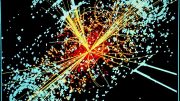
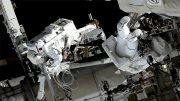
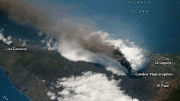


Be the first to comment on "Shining a New Light on Dark Energy: DES Releases Catalog of 700 Million Objects"